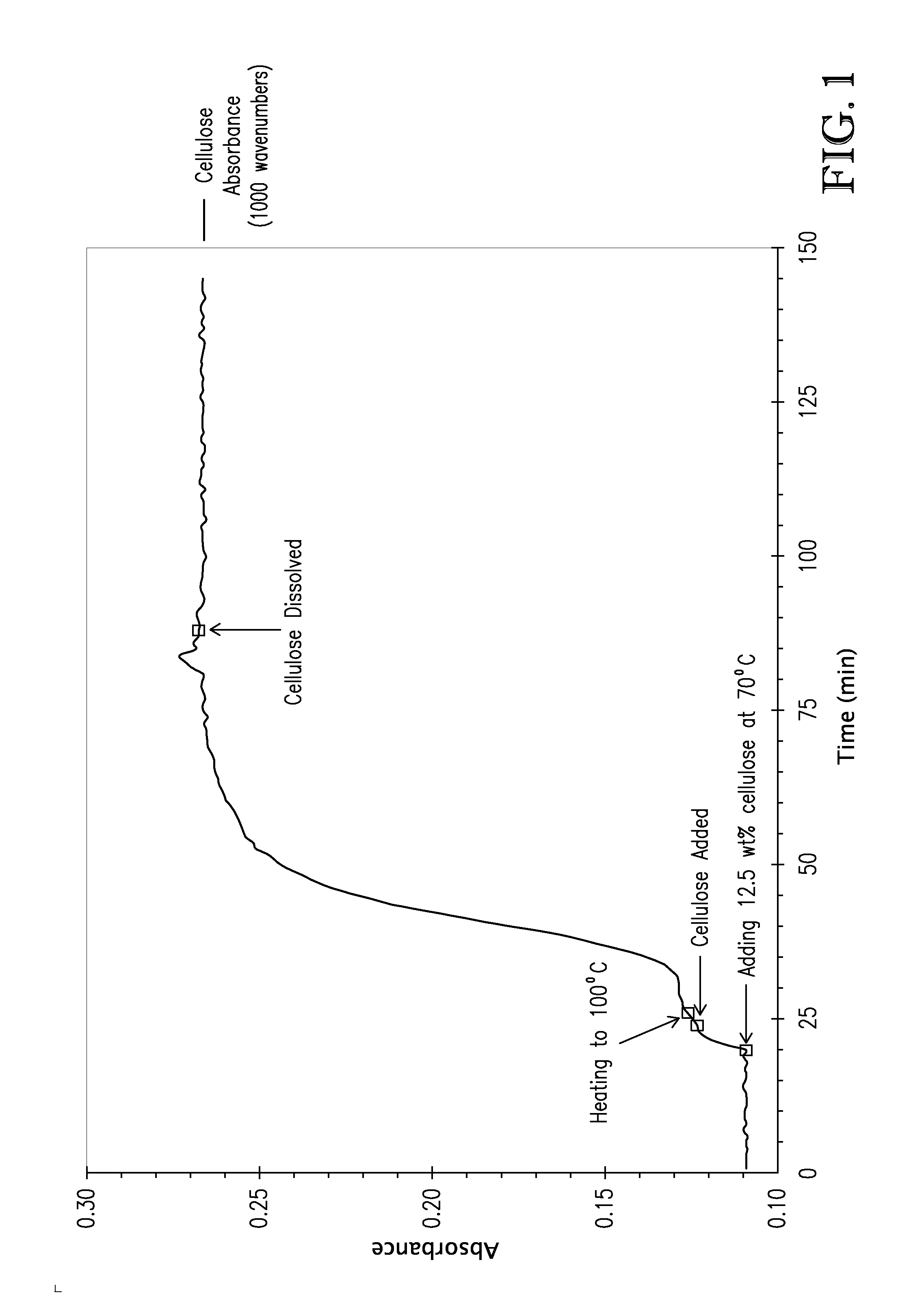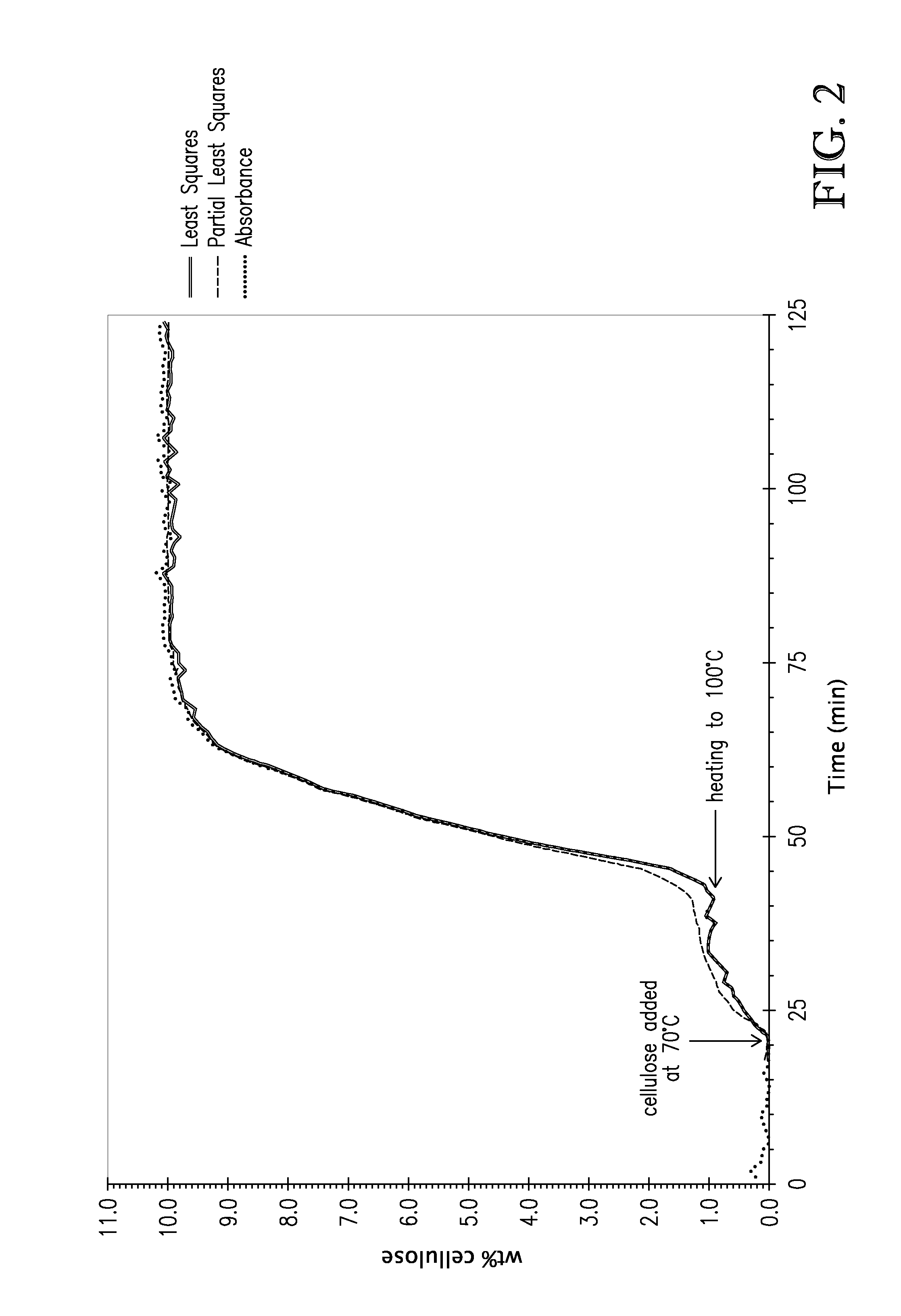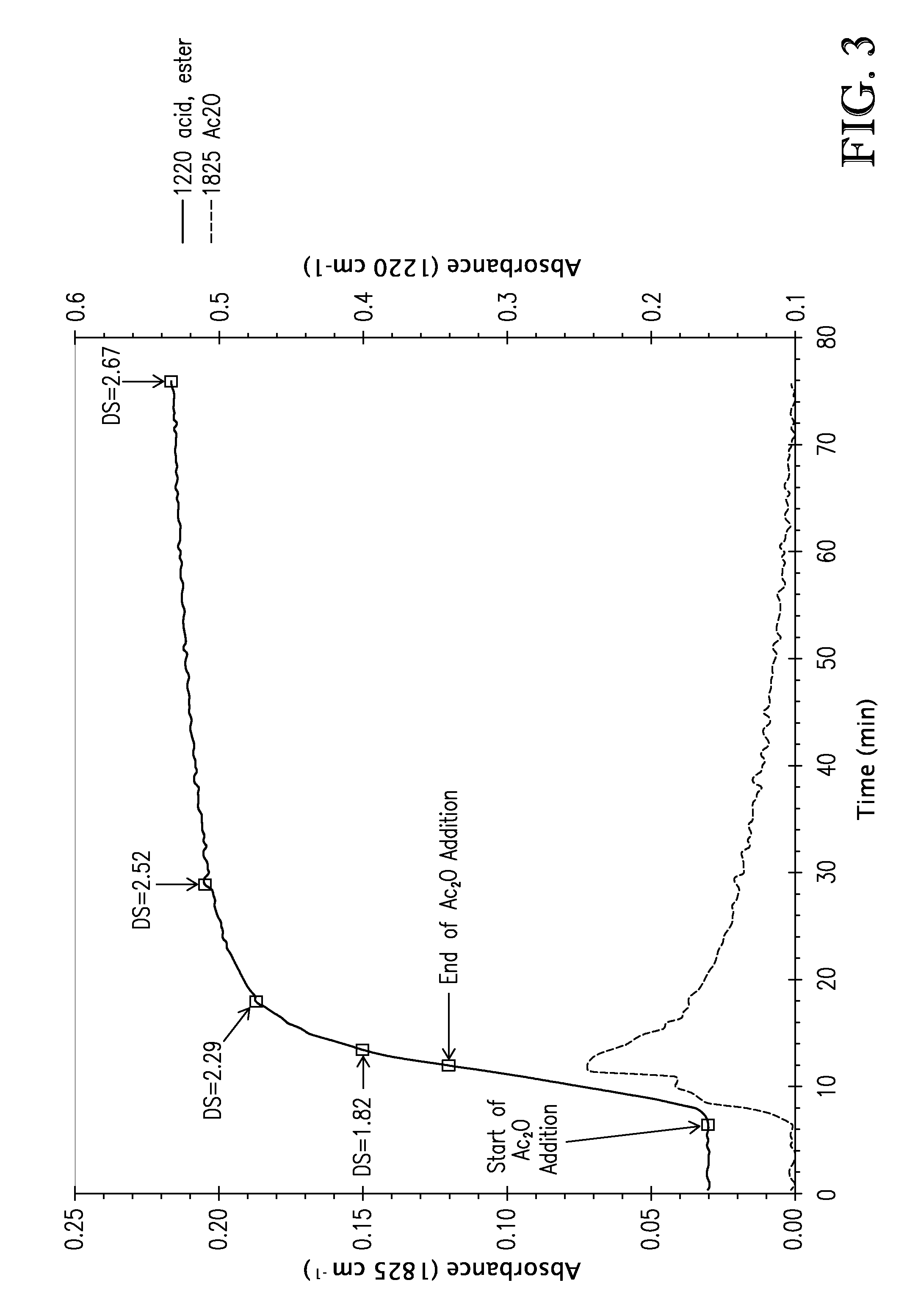Cellulose solutions comprising tetraalkylammonium alkylphosphate and products produced therefrom
a technology of cellulose and tetraalkylammonium halide, which is applied in the field of cellulose chemistry, can solve the problems of limited utility of ionic liquids for cellulose dissolution and esterification, and tetraalkylammonium halide is not practical media for making cellulose derivatives
- Summary
- Abstract
- Description
- Claims
- Application Information
AI Technical Summary
Benefits of technology
Problems solved by technology
Method used
Image
Examples
example 1
Preparation of Tributylmethylammonium Dimethylphosphate [TBMA]DMP
[0102]To a 1 L 3-neck round bottom flask equipped for mechanical stirring 400 g of freshly distilled tributylamine and 302 g trimethylphosphate (1 eq) were added. This resulted in two clear phases with the top phase being tributylamine. The flask was then placed in an oil bath, and the reaction mixture was blanked with N2. The oil bath was heated to 120° C. and the contact mixture was stirred for 49 h resulting in a pale, yellow, homogeneous mixture. After cooling to ambient temperature, the sample solidified giving a white solid (Yield>99%).
[0103]Analysis by proton NMR indicated >99% conversion of the starting materials to tributylmethylammonium dimethylphosphate. Thermogravimetric analysis (TGA) indicated the onset of thermal decomposition of the [TBMA]DMP at ca. 240° C. Analysis by differential scanning calorimetry (DSC) showed a melt (Tm) centered at 55° C. during the first heating scan to 100° C. at 20° C / min. Aft...
example 2
Dissolution of Cellulose in Tributylmethylammonium Dimethylphosphate ([TMBA]DMP)
[0105]Prior to cellulose dissolution, 52.26 g tributylmethylammonium dimethylphosphate ([TBMA]DMP) was added to a 3-neck 100 mL round bottom flask equipped for mechanical stirring and with a N2 / vacuum inlet. The flask was placed in an 80° C. oil bath, and the [TBMA]DMP was stirred for 17 hours at ca. 0.9 mm Hg. The [TBMA]DMP was cooled to 70° C., and an iC10 diamond tipped infrared probe (Mettler-Toledo AutoChem, Inc., Columbia, Md., USA) was inserted to measure absorbance.
[0106]To the [TBMA]DMP was added 7.46 g (12.5 wt %) of cellulose (DP ca. 335) while stirring vigorously (5 min addition). The cellulose easily and quickly dispersed in the [TBMA]DMP to produce a cellulose solution. Vacuum was applied with the aid of a bleed valve (ca. 1 mm Hg), and the oil bath was heated to 100° C. By the time the cellulose and [TBMA]DMP reached 100° C. (ca. 60 min), the mixture was a viscous, translucent cellulose so...
example 3
Development of Models for Analysis of the Amount of Cellulose Dissolved in Tetraalkylammonium Alkyl Phosphates
[0109]Following the general procedure of Example 2, different concentrations of cellulose (2.5, 5.0, 7.5, 10.0, 12.5 wt %) were dissolved in tributylmethylammonium dimethylphosphate. Using initial and final concentrations, absorbances at the different concentrations were fit using a partial least-squares method over the spectral region of 860-1320 cm−1. Additionally, a linear least squares fit was made to the second derivative of a cellulose absorbance band at 1157 cm−1. This band was selected on the basis that there is little or no interference from tetraalkylammonium alkylphosphates in this spectral region. FIG. 2 shows modeled wt % cellulose, and the experimental absorbance values for 10 wt % cellulose dissolved in tributylmethylammonium dimethylphosphate. As can be seen, the modeled wt % cellulose and the experimental absorbance were in excellent agreement.
[0110]This exa...
PUM
| Property | Measurement | Unit |
|---|---|---|
| contact temperature | aaaaa | aaaaa |
| temperatures | aaaaa | aaaaa |
| particle size | aaaaa | aaaaa |
Abstract
Description
Claims
Application Information
 Login to View More
Login to View More - R&D
- Intellectual Property
- Life Sciences
- Materials
- Tech Scout
- Unparalleled Data Quality
- Higher Quality Content
- 60% Fewer Hallucinations
Browse by: Latest US Patents, China's latest patents, Technical Efficacy Thesaurus, Application Domain, Technology Topic, Popular Technical Reports.
© 2025 PatSnap. All rights reserved.Legal|Privacy policy|Modern Slavery Act Transparency Statement|Sitemap|About US| Contact US: help@patsnap.com



